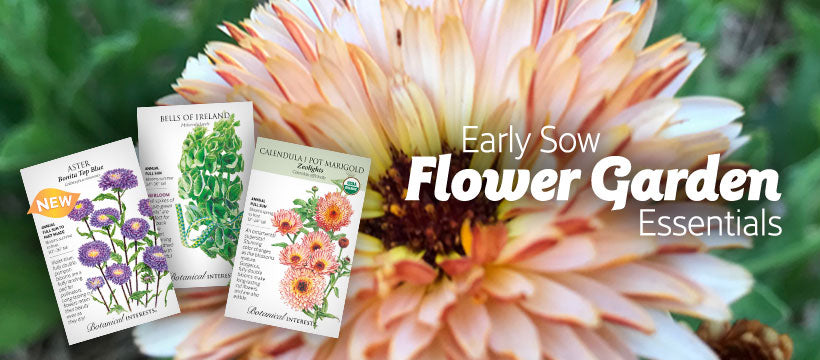A raised bed can open up a world of opportunity in the garden. Not only do they allow for greater control over soil quality and drainage, but they also reduce the risk of weeds and make it easier to plant and harvest. With so many options out there, it can be hard to know where to start! In this article, we'll explore the benefits of raised bed gardening and offer tips on how to fill up your bed without breaking the bank.
Benefits
Longer growing season: Raised beds warm up quickly in the spring, allowing for ideal growing conditions and an earlier opportunity to begin growing. You may also optimize the extra space by easily adding in row covers and trellises to protect your crops from frost, pests, or the daunting heat, and extend your growing season into the fall and winter months.
Choose the location: Decide exactly where your garden will be! Keep an eye on the kind of exposure that your property offers, and choose where to put your raised bed. Birdies raised beds can be placed on any surface, from bare dirt to concrete.
Mobility: Choosing a raised bed that is a proper height for your needs will improve mobility for those who have a hard time bending over, for gardeners who are disabled or in a wheelchair, or for those who just don't want to work on their knees!
Fewer pests and weeds: Having your soil line higher than the rest of your property will reduce weeds and pest pressure. Proper care and mulching practices will continue to decrease risk over time.
Better drainage and prevention of soil compaction: A well-maintained raised bed allows soil to drain better than an in-ground garden would. Since a raised bed will naturally eliminate the risk of foot traffic, soil compaction is also reduced.
Control soil composition: A raised bed allows you to control the planting medium in your garden, allowing complete control over your soil health. This gives you the opportunity to amend your soil according to the crops you would like to grow. You can control texture, structure, pore space, organic matter, available nutrients, aeration and drainage (oxygen and water), and pH levels.
How to Fill
Lay a weed barrier on the ground before setting up your raised bed. Household materials like newspaper or cardboard are great options to smother and block potential weeds. All the boxes, tape, and dunnage we use to ship Birdies beds are completely compostable and recyclable, so be sure to hang onto them to reuse them in your garden!
By using the German gardening technique known as hügelkultur, you can avoid filling your entire bed with high-quality soil, thus saving money and using up scrap resources around your yard. The idea is to fill the bottom 60%–70% of the bed with logs, unfinished compost, organic matter, and/or twigs. The largest materials are on the bottom, and the smallest materials are on top. The top 12 inches should be filled with a high-quality soil mix. You may want to alter the depth if you are growing a plant with a very deep root system. These materials will naturally settle every year, and then you can top-dress your raised bed with a couple of inches of compost. Adding organic matter, mulch, and/or cover crops (green manure) will optimize the retention and penetration of air, water, and nutrients.
Soil Mix Recipe
To make your own soil mixture, we recommend equal parts compost, coconut coir or peat moss, and horticultural vermiculite or perlite. Here's why:
Compost: This is where all the nutrients are coming from! There are many different types to choose from, like manure compost, worm casting compost (vermicompost), or even mushroom compost. Store-bought compost will typically have a pH between 6 and 8, depending on the type. To learn more about making your own compost, check out our article Composting 101.
Coconut coir: Improves air porosity even when wet, and aids in water retention. Coconut coir comes from the fibrous husks of the inner shell of the coconut. You will typically find it in blocks, and you will add water until it expands (follow the instructions on the label). Coconut coir can hold up to 9 times its weight in water. It is less acidic than peat moss, typically around 6–7.
Peat moss: Necessary for water and nutrient retention while preventing soil compaction. Peat moss is decomposed organic matter that has been harvested from peat bogs in northern regions of the world. It can hold up to 20 times its weight in moisture. Its pH values are typically around 3–5 (acidic).
Vermiculite: Improves aeration (oxygen supply), drainage, nutrient, and water retention, and has a near neutral pH of around 7–7.5. Vermiculite is a naturally-occurring mineral heated to a high temperature, expanding 8–20 times its original size.
Perlite: An extremely porous material that absorbs water while also improving drainage, and has a near neutral pH of around 7–7.5. Perlite is a natural white, lightweight, granular material made from expanded volcanic glass.
Raised bed gardening offers a multitude of benefits for both new and experienced gardeners alike. With increased control over soil quality, drainage, and weed prevention, a raised bed can provide the perfect growing conditions for your plants. By utilizing cost-effective filling techniques and creating a custom soil mix, you can build a raised bed that is tailored to your needs and budget. With these tips in mind, you can create a flourishing garden and reap the rewards of a bountiful harvest!
Written by Madeleine Pesso


